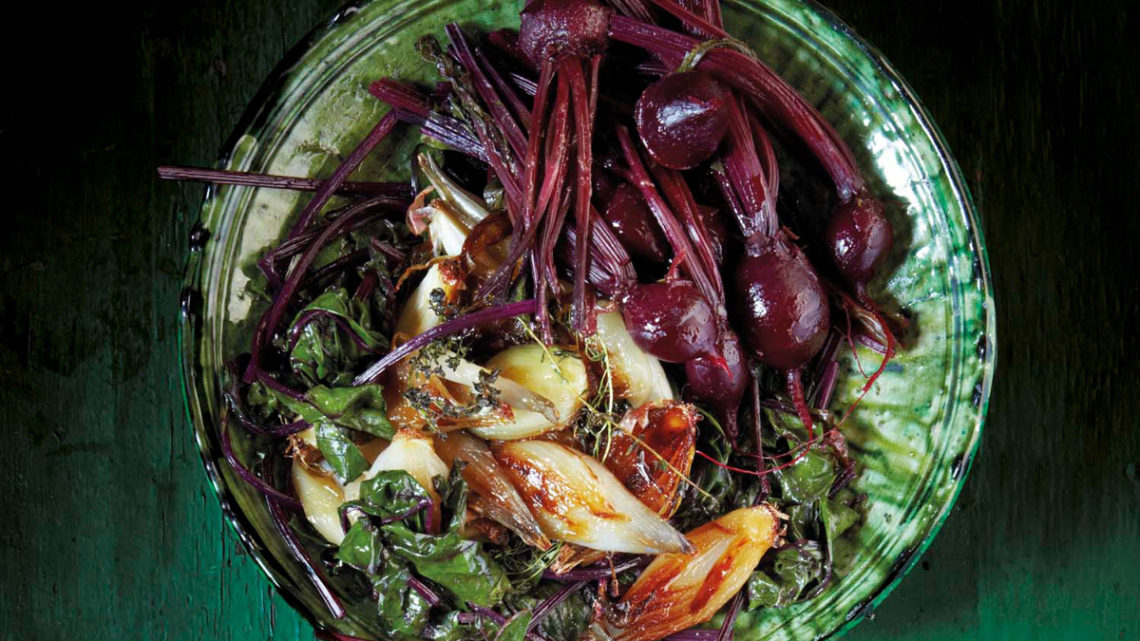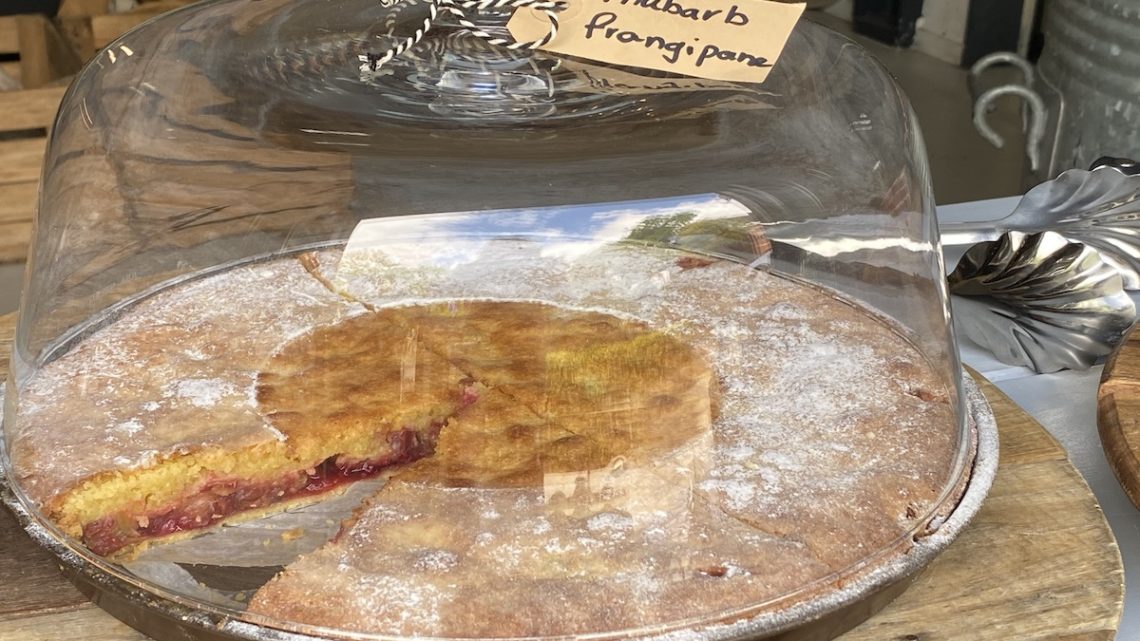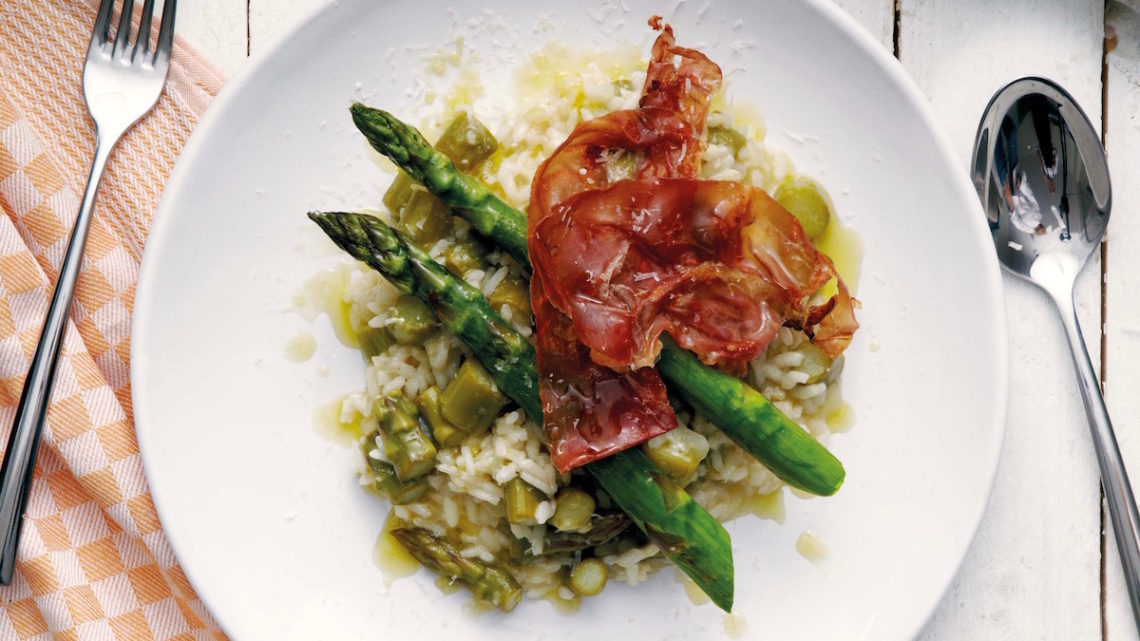turmeric
Though having only recently entered the mainstream as the ingredient of the moment, turmeric – or Curcuma longa as it’s known by its biological name – has been used for millennia everywhere from China and India to Jamaica and West Africa. While it’s likely that just about every bite of curry you’ve tasted in your lifetime contains turmeric, there is archaeological evidence indicating its use over 4 500 years ago. It has also long been used as a sacred root for body embellishment during cultural ceremonies. The Hindu tradition of Haldi, for example, sees the bride and groom having a tincture of oil, water and turmeric applied to their bodies as a blessing before their wedding.
Other than its gastronomical and religious uses, turmeric was grown and harvested as a natural textile dye – for centuries the distinctive yellow of Buddhist robes got their colour from turmeric. In contemporary fashion circles, one of the world’s largest fashion dye houses, Tintoria di Quaregna in Italy, has made headlines for its return to plant-based formulas with turmeric featuring prominently. Hip cosmetics brands such as NARS, Kiehl’s and Urban Decay have also been inspired by turmeric’s ancient cultural use as a beauty aid (it’s said to get skin glowing) and incorporated it into everything from make-up and foundation to face masks and moisturisers.
And then there is the evidence-based healing and health properties of turmeric, long used in the practice of natural medicine – in particular Ayurveda, the Indian system of holistic healing. Curcumin, the compound responsible for turmeric’s vivid colour, is known to have potent antioxidant, anti-inflammatory and anti-bacterial properties. This is a plant that packs a lot of punch!
HOW TO USE TURMERIC
Turmeric is on-trend, versatile, mild and earthy.
- Concoct a warm tea or iced tea with thinly sliced fresh turmeric and ginger, sweeten with honey.
- Make your favourite curry paste using turmeric and coconut oil. Store in a jar in the refrigerator and use in a sauce or when you make chicken, prawn or any other curry
- Add a bit of grated turmeric and cardamom to hot chocolate for a mild earthy flavour.
- For a pick-me-up a wellness shot mix grated turmeric, ginger and freshly squeezed orange juice. Add a little cayenne pepper at the end. Fresh mango or pineapple juice works just as well.
- Mix turmeric and paprika and sprinkle over cauliflower florets. Season with salt and pepper and a drizzle of olive oil and lemon juice. Roast in the oven at 180 degrees in the oven on a tray until golden brown. You can do the same with butternut or pumpkin.
- Add to carrot, pumpkin, corn or sweet potato soup.
- Spice up breakfast by adding a teaspoon or two of freshly grated turmeric to your flapjacks recipe. Serve with ginger honey.
- Garnish your favourite cocktail with a ribbon of fresh turmeric just before serving and watch the colour change. Magic.
- Add a bit of turmeric for your Asian style broth or any mash such as potato, sweet potato, pumpkin or carrot and potato.
GROWING TURMERIC
- Turmeric is a fast grower, shooting new growth from the tubers in early summer. They can quickly grow up to two metres within a few weeks.
- Turmeric is easy to grow during the warm summer months when plants will need regular watering. Grow tubers in pots with a fertile compost mix that drains well. Tubers should be kept dry when they are dormant.
- We love turmeric because it’s such an easy grower. The leaves are very attractive but it’s the flowers that are the real show-stoppers. They’re like hidden gems between tall, lush growth.
- It’s a little known fact, but the flowers also taste good!
Beetroot
Beetroot, freshly harvested, are super-sweet, ready to eat after boiling for a much shorter time and just delicious without anything added. The balance of the sweetness and almost liquorice lingering aftertaste is amazing.
This is a two-in-one vegetable because the young leaves and the root are both edible. In the old days, beetroot was quite ordinary – cooked and served as a salad with sweet vinegar, or commercially pickled, causing everything else on the plate to turn red.
Nowadays, however, the humble beetroot has reinvented itself. It’s trendy for good reason: its health benefits are numerous (beetroot is a rich source of nutrients), and its versatility makes it ideal for use in all types of cuisine. Different varieties of beetroot now being cultivated are still finding their way into the market. Even the young leaves can be steamed or boiled – they have the taste and texture of spinach.
BEETROOT FOR BREAKFAST
- in a fresh juice with ginger and fresh apple
- in a beetroot soufflé with melting Gorgonzola
- scrambled eggs on toast with beetroot chutney
BEETROOT IN A SALAD
- cook with roasted butternut and toasted pumpkin seeds; serve with a cinnamon and balsamic reduction dressing
- cook and slice with pitted fresh cherries, raspberries, sliced baby radish and red basil; toss with walnuts and a walnut dressing
- cook and grate over a potato salad with a mustard and lemon vinaigrette
- top julienned fresh carrots with fresh julienned beetroot and thinly sliced shallots; serve with an orange and dill dressing with grated orange rind
- cook and top with rocket and an anchovy dressing
BEETROOT FOR LUNCH OR DINNER
- cook and bake in a quiche with prosciutto, Parmesan and caperberries
- cook and peel whole beetroot while still warm; serve with Boursin, toasted pine nuts and pomegranate syrup, seasoned with salt and freshly cracked black pepper
- cook or pickle as part of a beef or ostrich burger with a generous dollop of beetroot and onion chutney
- top a carpaccio of raw beetroot with lightly smoked grilled trout; serve with a horseradish dressing and warm crusty bread
- slice beetroot on a toasted baguette with ham and melting Brie; top with a beetroot pickle
- as a warm creamy soup with lightly smoked mussels
- in a risotto with star anise and shaved Parmesan
- as part of a vegetarian lasagne, using only cooked sliced beetroot and steamed beet greens with sautéed red onion and béchamel sauce; top with Gorgonzola and Parmesan
- roast and serve with seared duck breast and a ground coriander and orange sauce
PINK BAKING AND COOKING WITH BEETROOT
- add beetroot coulis to your favourite cheesecake recipe
- add grated beetroot to your rich chocolate cake to keep the cake moist and give a dark red colour
- add a little beetroot juice to icing for a pink colour
- add a little beetroot juice when melting white chocolate for drizzling over cake or any baked goods
- add beetroot juice to waffle mixture to make pink waffles
- add a little beetroot juice to cooked rice
- enhance any red or pink colour with beetroot juice instead of food colourant
BEETROOT IS BEST WITH:
PROTEIN: anchovies / bacon, prosciutto, salted pork / smoked fish, trout / venison
PRODUCE: apples / cherries / pears / raspberries / lemons / oranges / cucumber / ginger / horseradish / onions / shallots / potatoes / rocket
HERBS AND SPICES: allspice / star anise / cloves / curry / cumin / mustard seeds / chives / mint / dill / nutmeg / curry leaves / parsley / tarragon / watercress / radicchio
CONDIMENTS: mustard / vinaigrette / balsamic vinegar / sherry and red wine vinegar / walnut oil / brown sugar / balsamic reduction
DAIRY: butter / cream / crème fraîche / sour cream / Parmesan / Boursin / cheddar / ricotta
NUTS: walnuts
TIP: ABOUT THOSE BEETROOT STAINS…
Beetroot is a water-soluble dye; using hot water will react as a fixative for stronger colour. Use cold water and rub your hands with salt and lemon juice to remove stains on your skin. For stains on fabric, rub raw pear on the mark before washing in cold water. Then wash with soap.
Frangipane with rhubarb
Ingredients
Pastry
350 g flour
225 g butter
100 g powdered sugar
75 g egg yolks (± 3 egg yolks)
salt
Filling
225 g butter
225 g caster sugar
175 g ground almonds
50 g flour
4 eggs
3 tablespoons raspberry jam
1 kg rhubarb
demarara sugar, to taste
2 tablespoons grenadine
icing sugar, for dusting
Method
To make the dough, place the flour, powdered sugar and salt in a large bowl. Make a well in the middle and add the butter and egg yolks. Knead the butter and eggs to combine and then gradually incorporate the flour. If the pastry seems too dry, add extra egg yolk or a little cold water. Knead the pastry gently until soft but not sticky. Cover with plastic and place in the refrigerator for 30 minutes.
Roll the pastry out on a lightly floured surface to a thickness of 5 mm to line a tart tin of 20 cm in diameter.
Allow the pastry case to rest in the fridge for about an hour so that it won’t shrink on baking. Bake the pastry case blind – line the with a piece of baking paper or aluminium foil and fill with dried beans or rice. Place in preheated oven at 180°C for about 15 minutes or until the pastry is cooked. Remove the beans and paper or foil. Brush the pastry with an egg yolk return to the oven for another 5 minutes or until the pastry is golden.
Cut the rhubarb into 1 cm pieces, place on a roasting tray and sprinkle with demarara sugar to taste and 2 tablespoons grenadine. Roast at 200C for 10 minutes. Allow to cool.
To make the frangipane, beat the butter and sugar together in an electric mixer until light. Mix the ground almonds and flour together in a separate bowl. Add the eggs to the butter-sugar mixture, one at a time, followed by a spoonful of the almond-flour mixture. Once all the eggs have been added, add the brandy and remaining almond mixture.
Spoon the jam into the pastry case. Spoon the rhubarb in a single layer and spoon the almond filling on top. Bake in the oven for 30-35 minutes or until gilden brown and set. Allow the tart to cool in the tin. Dust with icing sugar before serving.
Asparagus Risotto with Parma Ham
A wonderful version of a risotto made with green asparagus which are bang in season. Leave out the Parma ham to make it vegetarian.
English
Serves 2
Ingredients
30g butter
1 onion
1 organic vegetable stock cube
1 bunch green asparagus
150g risotto rice
50g grated Parmesan
4 slices Parma ham
3 tablespoons olive oil
200ml white wine
salt and pepper
Method
Place the stock cube in a pot with 1 litre water and bring gently to the boil. Finely chop the onion, cut off the tough ends of the asparagus stalks and cut half the asparagus into pieces.
Add the whole asparagus to the pot of stock and boil gently (blanche) for 3 minutes. Remove them from the pot and set aside.
Heat a pot over medium heat with 3 tablespoons olive oil. Add the onion and sweat for 7 minutes. Add the rice and asparagus pieces to the pan and stir well.
Add the white wine and allow to reduce until it has been absorbed by the rice. Add the stock, a spoonful at a time, to the pan. When the rice has absorbed the stock, repeat the process. Make sure to stir often.
After about 15-20 minutes, when the rice is al dente, add the butter and ¾ of the grated Parmesan. Mix well and season with salt and pepper. Heat a grill pan over medium heat and grill the whole asparagus for 2-3 minutes, followed by the Parma ham for 1 minute.
Divide the risotto between 2 plates. Lay the grilled asparagus and Parma ham on top. Sprinkle with the remaining Parmesan and serve.
Nederlands
voor 2 personen
Ingrediënten
30g boter
1 ui
1 biologisch groenten bouillonblokje
1 bundel groene asperges
150g risotto rijst
50g geraspte Parmezaan
4 plakjes Parmaham
3 eetlepels olijfolie
200ml witte wijn
zout en peper
Bereiding
Doe het bouillonblokje in een pan met 1 liter water en breng zachtjes aan de kook. Snijd de ui fijn, snijd de harde onderkant van de asperges af en snijd de helft van de asperges in stukjes.
Voeg de ongesneden asperges toe aan de pan met bouillon en kook zachtjes (blancheer) voor 3 minuten. Haal ze uit de pan en zet opzij.
Verwarm een pan op medium vuur met 3 eetlepels olijfolie. Voeg de ui toe en smoor voor 7 minuten. Voeg de rijst en de asperge stukjes toe en roer het mengsel goed door elkaar.
Voeg de witte wijn toe en laat het inkoken totdat de wijn door de rijst is geabsorbeerd. Voeg steeds een lepel bouillon toe aan de rijst als de bouillon geabsorbeerd is, blijf roeren.
Na ongeveer 15-20 minuten, als de rijst al dente is, voeg de boter en 3/4 van de geraspte Parmezaan toe. Roer ingrediënten door elkaar en breng op smaak met zout en peper. Verwarm een grillpan op medium vuur en grill de asperges voor 2-3 minuten, daarna de parmaham voor 1 minuut.
Verdeel de risotto over 2 borden. Leg de gegrilde asperges en parmaham erop. Bestrooi met extra Parmezaan.




